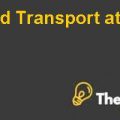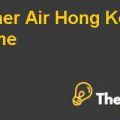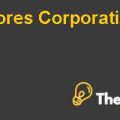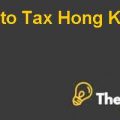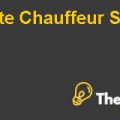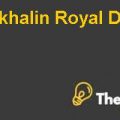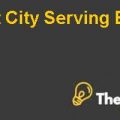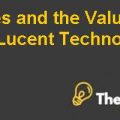
Sale of Pillsbury and Burger King
Our analysis in Exhibit 2 shows that the Pillsbury contributes 32.11% to the total sales revenue of the group where as the Burger King contributes 7.93%, which indicates that the packed goods represent the second major division of the group in terms of revenue. The same trend continues in operating profit as well and the operating profits for the FY00 represents 24.85% and 10.2% for Pillsbury and King Burger respectively.
Spirits and wine is the biggest division among all in terms of revenue and operating profit, which represents 41.88% and 50.61% respectively. This division is not only the biggest division but it is also the fastest growing division of the group, which represents 8% sales growth for the year. Guinness is the second largest division in terms of operating profit growth rate. Due to the similarity of the products and distribution channel of the two businesses, the group is considering to integrate them, which will reduce the cost by 130 million pounds annually.
The group’s strategic view to divest the shareholding in Pillsbury and Burger King will raise funds, which will be used by the company to expand in alcoholic industry. The group expects to drive growth through innovations around unrivalled portfolio of brands and provide an improved base for top line growth.
Further, the General Mills will pay $5.1 billion cash and 141 million newly issued shares of the company, which amounts approximately $5.4 billion. These funds can be invested to enjoy certain efficiencies and synergies, which could benefit the firm to save cost of manufacturing, procurement and supply
Factors involve in simulation model and further adjustments in the model
Figure 2 represents the output chart of Monte Carlo Model. The horizontal axis of the model represents the decrease in interest coverage or increase in gearing whereas the vertical axis represents the present value of taxes paid and distress cost. The optimal structure is the point which maximizes the present value of cash flows to the equity holders. Interest coverage of 4.2 represents the financing mix which maximizes the expected sum of financial distress costs and taxes paid. The strategy will substantially threaten the rating of the company and the results in Exhibit 5 shows that at the median interest coverage of 4.94, the company will have the rating of BBB. The lower yield firms will not be able to generate sufficient funds for expansion, the worst the rating, the greater the difficulty will be in raising funds
The Monte Carlo stimulation considers different variables which include local 15- year sequence, operating cash flows, EBIT, interest rates, foreign exchange and market correlations but it fails to consider the nature of the instruments i.e.: compound instruments have usually low interest rate due to its nature to convert in to equity stock. Further, the model also fails to consider the potential conflict of interest between management and debt holders. Increased debt will increase the risk and return to the debt holder but will also give rise to agency cost.
Additionally, the potential future acquisitions are also missing so it must be incorporated as a part of the strategy. Further, some of the trials represent a 20% reduction in asset value and there are no provisions in the model for issuing equity to pay down debt when coverage ratio falls. This substantially reflects that the possibility of the firm to handle financial distress is minimized, so some actions are required in order to produce or reduce the impact of financial distress. i.e.: issue equity to pay debt.........................
This is just a sample partial case solution. Please place the order on the website to order your own originally done case solution.

